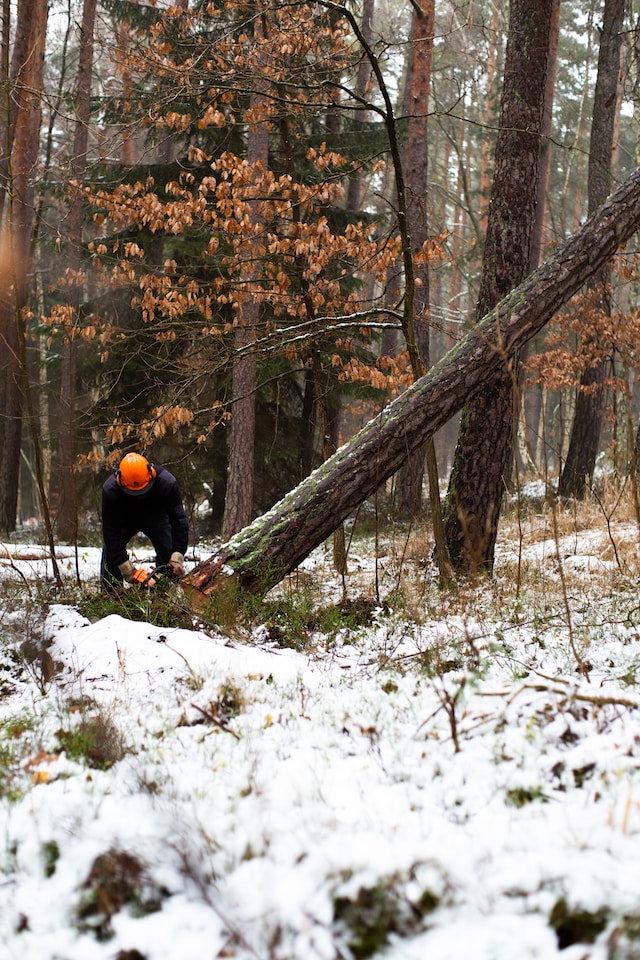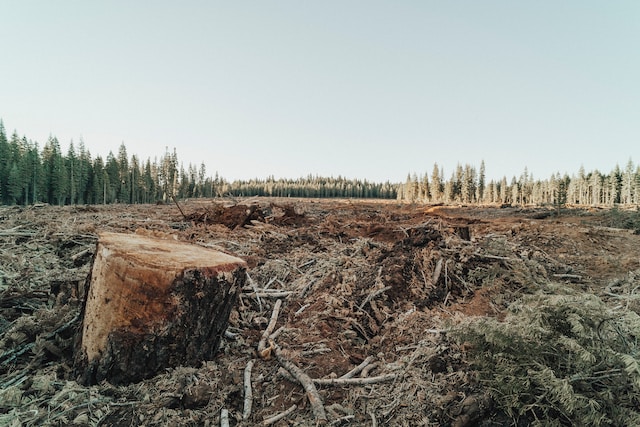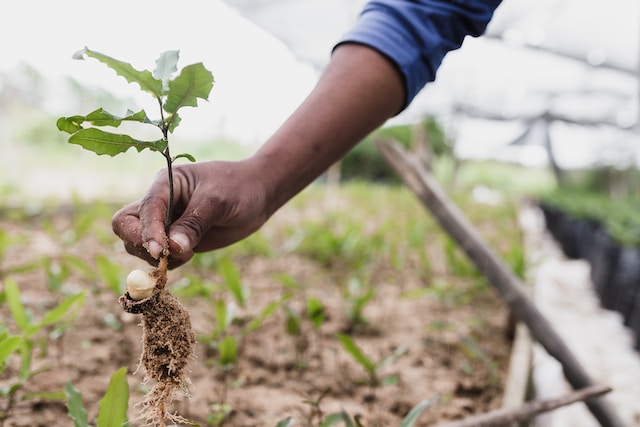One of the most pressing challenges we face in this modern age is the rapidly accelerating issue of deforestation. Deforestation, the process of stripping forests of their rich foliage and trees, not only disrupts the intricate ecosystems that have flourished for centuries but also devastates the countless species that call these woodlands home. The loss of these biodiverse habitats leaves behind a desolate landscape, bereft of the life-sustaining benefits forests provide.

However, amidst this unsettling reality, there is a glimmer of hope that emerges: the concept of reforestation. Recognizing the urgency and gravity of the situation, initiatives and individuals strive to reverse the detrimental effects of deforestation by planting new trees, restoring once-thriving ecosystems, and revitalizing the ecological harmony that had been disturbed.
Deforestation: Causes and Impacts
Deforestation, driven by various factors, has become an alarming global issue. This section explores the causes behind deforestation and delves into the far-reaching impacts it has on our planet.
Agricultural Expansion
Driven by the growing demand for food, large swathes of forests are being cleared to make way for agriculture. The conversion of forests into vast agricultural fields, particularly for livestock farming and monoculture crops, leads to extensive deforestation. This practice not only disrupts delicate ecosystems but also contributes to soil erosion and loss of biodiversity.
Extractive Industries
Another significant cause of deforestation is the extraction of natural resources such as minerals, oil, and gas. Logging, mining, and other extractive industries oftentimes operate with little regard for sustainable practices, resulting in widespread forest destruction. The loss of trees not only affects the local flora and fauna but also impacts Indigenous communities whose livelihoods depend on the forests.
Urbanization and Infrastructure Development
As cities expand and populations grow, the need for housing, roads, and infrastructure increases. This urban sprawl often encroaches upon forested areas, leading to deforestation. Clearing forests to make way for concrete jungles not only disrupts the ecological balance but also diminishes the natural beauty and recreational value that forests offer.
Climate Change
Deforestation and climate change are intrinsically linked. Trees act as natural carbon sinks, absorbing and storing vast amounts of carbon dioxide. When forests are cleared, the stored carbon is released back into the atmosphere, exacerbating the greenhouse effect and contributing to global warming. Deforestation also disrupts local weather patterns, causing changes in rainfall and temperature, which ultimately impact the entire ecosystem.
Impacts of Deforestation

The impacts of deforestation are far-reaching and have severe consequences for both the environment and society. Some of the key impacts include:
- Loss of Biodiversity
Forests are home to countless species, many of which are endemic and found nowhere else on Earth. Deforestation directly leads to habitat loss, pushing numerous plant and animal species towards extinction. The destruction of these habitats disrupts intricate ecological relationships and weakens the overall resilience of ecosystems.
- Soil Erosion and Degradation
The shallow-rooted grasses and crops often planted after deforestation are unable to hold the soil together effectively. This leads to increased soil erosion, diminished fertility, and reduced water retention capabilities. The resulting degradation of agricultural lands hampers food production and exacerbates the cycle of deforestation as more land is cleared to compensate for lower yields.
- Water Cycle Disruption
Forests play a vital role in regulating water cycles. They act as natural sponges that absorb rainfall, reducing surface runoff and enhancing groundwater recharge. Deforestation disrupts this natural process, leading to increased flooding, soil erosion, and reduced water availability during dry seasons. These changes have profound implications for local communities dependent on forests for their water needs.
- Indigenous Communities and Cultural Loss
Deforestation often disproportionately affects Indigenous communities who have long-standing relationships with forest ecosystems. For these communities, forests are not merely sources of livelihood but also hold cultural and spiritual significance. The loss of their ancestral lands and traditional knowledge due to deforestation amplifies the social and cultural impacts, further marginalizing these communities.
Reforestation as a Solution
In the face of the alarming consequences of deforestation, reforestation emerges as a hopeful solution to restore the balance that has been disrupted. Through deliberate efforts to plant trees, promote sustainable land management, and engage local communities, reforestation provides a pathway towards healing ecosystems, combating climate change, and fostering socio-economic development.
The Power of Trees: Trees are not merely silent witnesses to the environmental destruction caused by deforestation; they hold immense potential to reverse the damage. Reforestation efforts focus on planting a diverse range of tree species, carefully selected to restore ecological balance. Trees serve as the foundation of thriving ecosystems, providing habitat for countless species, regulating water cycles, and combating climate change through carbon storage.
Community Engagement: Reforestation initiatives understand the importance of involving local communities in tree planting efforts. By actively engaging with communities, educating them about the benefits of reforestation, and incentivizing their participation, projects can ensure the long-term success and sustainability of reforestation efforts. This holistic approach empowers communities to take ownership of their environment, fostering a sense of stewardship and responsibility.
Reforestation Techniques: Various reforestation techniques have been developed to enhance the success rate and efficiency of tree planting efforts. These techniques include:
- Direct Seeding: Seeds are directly sown in the target area, allowing for the natural germination and establishment of new trees. This approach is cost-effective and suitable for large-scale reforestation projects.

- Reforestation by Tree Nursery: Seedlings are grown in nurseries and then transplanted to the desired locations. This method ensures a higher survival rate and allows for the cultivation of specific tree species.
- Agroforestry: Combining tree planting with agricultural practices, agroforestry promotes sustainable land use while providing economic benefits to communities. This approach integrates trees with crops or livestock, creating a harmonious coexistence between agriculture and reforestation.
Ecosystem Restoration: Reforestation goes beyond the act of planting trees; it aims to restore entire ecosystems. This entails the careful selection of tree species that can thrive in specific ecological conditions and mimic natural forests.
Restoration efforts also include rehabilitating soil health, reintroducing native flora and fauna, and creating corridors for wildlife movement. These comprehensive restoration projects support the revival of once-degraded ecosystems and the recovery of biodiversity.

Green Job Creation: Reforestation initiatives not only contribute to environmental rejuvenation but also create employment opportunities. From nursery workers to tree planters and project managers, the process of reforestation generates a wide range of green jobs. These employment opportunities provide economic benefits to local communities and facilitate the transition towards sustainable development.
Challenges and Considerations
- Funding and Resources: Implementing large-scale reforestation projects requires substantial financial resources, technical expertise, and logistical support. Securing funding from government bodies, NGOs, and private donors is a significant challenge that reforestation initiatives often face. Additionally, ensuring a steady supply of tree seedlings, equipment, and trained personnel is crucial for successful implementation.
- Long-Term Maintenance: Reforestation efforts go beyond planting trees; they require ongoing maintenance and care. This includes regular monitoring, watering, weeding, and protection against pests and diseases. Without proper maintenance, the survival rate of newly planted trees decreases, hindering the overall success of reforestation projects.
- Land Tenure and Rights: Land ownership and tenure issues can pose significant challenges for reforestation initiatives. Clear and secure land rights are essential to avoid conflicts with local communities and ensure sustainable management of reforested areas. Collaborating with Indigenous communities and respecting their traditional land rights is particularly crucial for successful reforestation projects.
- Climate Resilience: As climate change intensifies, reforestation efforts must consider the resilience of tree species to changing climatic conditions. Planting a diverse range of native species that are adapted to the local climate increases the chances of long-term success. Additionally, considering future climate projections and selecting species that are more tolerant to drought, extreme temperatures, and pests is vital for creating resilient forests.
- Education and Awareness: Reforestation initiatives need to prioritize education and awareness campaigns to ensure long-term community engagement and support. Educating local communities about the importance of reforestation and the benefits it brings, such as improved biodiversity, ecosystem services, and economic opportunities, fosters a sense of ownership and encourages sustainable practices.

- Collaboration and Partnerships: Collaboration among various stakeholders, including governmental bodies, NGOs, local communities, and private enterprises, is essential for the success of reforestation projects. Building strong partnerships helps leverage resources, share knowledge and expertise, and develop holistic approaches that address multiple challenges simultaneously.
- Monitoring and Evaluation: Regular monitoring and evaluation are crucial to assess the progress and impact of reforestation projects. This involves measuring tree survival rates, biodiversity recovery, ecosystem health, and the socioeconomic benefits generated. Monitoring allows for mid-course corrections, adaptive management, and the dissemination of best practices.
- Scaling Up Reforestation Efforts: While individual reforestation projects can create meaningful change, global-scale efforts are needed to combat deforestation effectively. Scaling up reforestation initiatives requires collaboration at national and international levels, robust policy frameworks, and the commitment of governments, organizations, and individuals to invest in long-term solutions.
Reforestation holds the promise of reversing the alarming effects of deforestation, restoring ecosystems, and mitigating climate change. Although reforestation initiatives face various challenges, through innovative approaches, community engagement, and collaborative partnerships, we can foster a sustainable future where forests thrive, biodiversity flourishes, and communities benefit from the invaluable ecological services provided by these living ecosystems. With concerted efforts, reforestation can be the stepping stone towards a more harmonious coexistence with nature.


